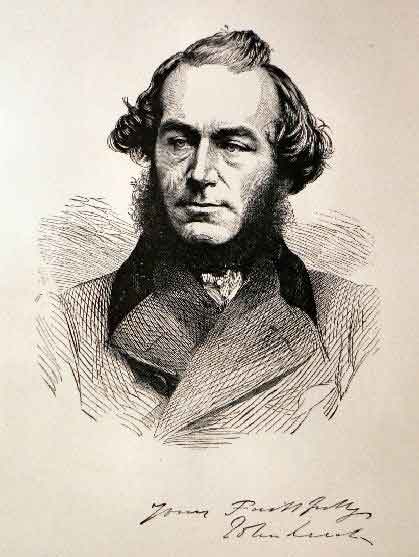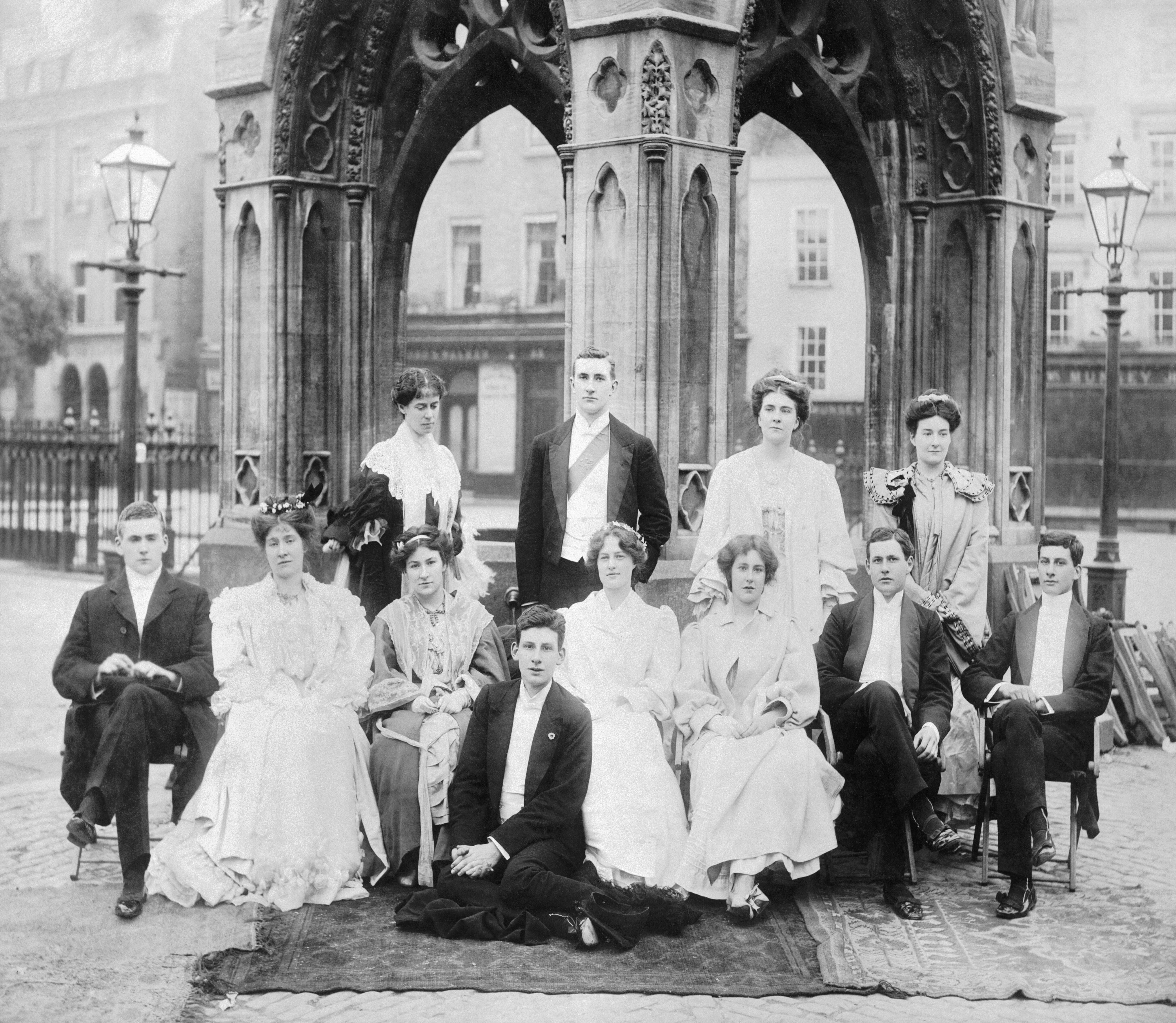|
Robert Smith Surtees
Robert Smith Surtees (17 May 180516 March 1864) was an English editor, novelist and sporting writer, widely known as R. S. Surtees. He was the second son of Anthony Surtees of Hamsterley Hall, a member of an old County Durham family. He is remembered for his invented character of Jorrocks, a vulgar but good-natured sporting cockney grocer. Early life Surtees attended a school at Ovingham and then Durham School, before being articled in 1822 to Robert Purvis, a solicitor in Newcastle upon Tyne. Career Surtees left for London in 1825, intending to practise law in the capital, but had difficulty making his way and began contributing to the ''Sporting Magazine''. He launched out on his own with the ''New Sporting Magazine'' in 1831, contributing the comic papers which appeared as ''Jorrocks' Jaunts and Jollities'' in 1838. Jorrocks, the sporting cockney grocer, with his vulgarity and good-natured artfulness, was a great success with the public, and Surtees produced more Jorrocks ... [...More Info...] [...Related Items...] OR: [Wikipedia] [Google] [Baidu] |
Hamsterley Hall
Hamsterley Hall is an 18th-century English country house at Hamsterley, Consett, Hamsterley, Rowlands Gill, County Durham, England. It is a listed building, Grade II* listed building. The estate at Hamsterley was given, in 1762, by Swinburne Baronets, Sir John Swinburne Bt to his younger brother Henry Swinburne. In 1769, Henry carried out substantial alterations to the then existing house to create the present two-story, four-bayed castellation, castellated Gothic Revival architecture, Gothic Revival-style mansion. Swinburne died in 1803 and in 1806 the property was sold to Anthony Surtees. His son Robert Smith Surtees, a novelist, acquired the estate in 1838. He was High Sheriff of Durham in 1856. He died in 1864, leaving his estate to his daughter Eleanor, who married John Gage Prendergast Vereker, 5th Viscount Gort in 1885. Their first son John Vereker, 6th Viscount Gort Victoria Cross, VC was succeeded in 1946 by his brother Standish Robert Gage Prendergast Vereker, 7th Viscou ... [...More Info...] [...Related Items...] OR: [Wikipedia] [Google] [Baidu] |
John Leech (caricaturist)
John Leech (29 August 1817 – 29 October 1864) was a British caricaturist and illustrator. He was best known for his work for ''Punch (magazine), Punch'', a humorous magazine for a broad middle-class audience, combining verbal and graphic political satire with light social comedy. Leech catered to contemporary prejudices, such as anti-Americanism and antisemitism and supported acceptable social reforms. Leech's critical yet humorous cartoons on the Crimean War helped shape public attitudes toward heroism, warfare, and Britons' role in the world. Leech also enjoys fame as the first illustrator of Charles Dickens' 1843 novella ''A Christmas Carol''. He was furthermore a pioneer in comics, creating the recurring character ''Mr. Briggs'' and some sequential illustrated gags. Early life John Leech was born in London. His father, a native of Ireland, was the landlord of the London Coffee House on Ludgate Hill, "a man", on the testimony of those who knew him, "of fine culture, a ... [...More Info...] [...Related Items...] OR: [Wikipedia] [Google] [Baidu] |
Brideshead Revisited
''Brideshead Revisited: The Sacred & Profane Memories of Captain Charles Ryder'' is a novel by the English writer Evelyn Waugh, first published in 1945. It follows, from the 1920s to the early 1940s, the life and romances of Charles Ryder, especially his friendship with the Flytes, a family of wealthy English Catholics who live in a palatial mansion, Brideshead Castle. Ryder has relationships with two of the Flytes: Lord Sebastian and Lady Julia. The novel explores themes including Catholicism and nostalgia for the age of English aristocracy. A well-received television adaptation of the novel was produced in an 11-part miniseries by Granada Television in 1981. In 2008, it was adapted as a film. Plot The novel is divided into three parts, framed by a prologue and epilogue. ''Prologue'' The prologue takes place during the final years of the Second World War. Charles Ryder and his battalion are sent to a country estate called Brideshead, which prompts his recollections of the ... [...More Info...] [...Related Items...] OR: [Wikipedia] [Google] [Baidu] |
Thame
Thame is a market town and civil parish in South Oxfordshire, England, about east of the city of Oxford and southwest of Aylesbury. It derives its name from the River Thame which flows along the north side of the town and forms part of the county border with Buckinghamshire. The parish includes the hamlet of Moreton south of the town. The 2011 Census recorded the parish's population as 11,561. Thame was founded in the Anglo-Saxon era and was in the kingdom of Wessex. History Abbey, parish church and prebendal Thame Abbey was founded in 1138 for the Cistercian Order: the abbey church was consecrated in 1145. In the 16th century Dissolution of the Monasteries the abbey was suppressed and the church demolished. Thame Park (the house) was built on the site, incorporating parts of the abbey including the early-16th century abbot's house. Its interior is one of the earliest examples of the Italian Renaissance in England. A Georgian west wing was added in the 18th century. ... [...More Info...] [...Related Items...] OR: [Wikipedia] [Google] [Baidu] |
Anthony Blanche
''Brideshead Revisited: The Sacred & Profane Memories of Captain Charles Ryder'' is a novel by the English writer Evelyn Waugh, first published in 1945. It follows, from the 1920s to the early 1940s, the life and romances of Charles Ryder, especially his friendship with the Flytes, a family of wealthy English Catholics who live in a palatial mansion, Brideshead Castle. Ryder has relationships with two of the Flytes: Lord Sebastian and Lady Julia. The novel explores themes including Catholicism and nostalgia for the age of English aristocracy. A well-received television adaptation of the novel was produced in an 11-part miniseries by Granada Television in 1981. In 2008, it was adapted as a film. Plot The novel is divided into three parts, framed by a prologue and epilogue. ''Prologue'' The prologue takes place during the final years of the Second World War. Charles Ryder and his battalion are sent to a country estate called Brideshead, which prompts his recollections of the ... [...More Info...] [...Related Items...] OR: [Wikipedia] [Google] [Baidu] |
Monica Marsden
Monica may refer to: People *Monica (given name), including a list of people and fictional characters with the name * Monica (actress) (born 1987), Indian film actress * Mônica (footballer, born 1978) (Mônica Angélica de Paula) * Mônica (footballer, born 1987) (Mônica Hickmann Alves) *Monica (singer) (born 1980) *Saint Monica, mother of Augustine Places * Monica, Kentucky, U.S. * 833 Monica, a minor planet Arts, entertainment and media Film * ''Monica'' (2011 film), an Indian film * ''Monica'' (2022 film), an American-Italian film Music * MONICA, a Scottish band with members of The Apples and others * "Monica" (song), by The Kinks, 1968 *"Monica", a song by Dan Bern from the 1998 album '' Fifty Eggs'' *"Monica", a 1984 song by Kōji Kikkawa **covered by Leslie Cheung, 1984 **covered by Leo Ku on the 2005 album '' Jade Solid Gold'' Other uses in arts and entertainment *Monica, a fictional country in '' Æon Flux'' *Monica, a fictional planet in David Weber's science fic ... [...More Info...] [...Related Items...] OR: [Wikipedia] [Google] [Baidu] |
Memoirs Of A Fox-Hunting Man
''Memoirs of a Fox-Hunting Man'' is a novel by Siegfried Sassoon, first published in 1928 by Faber and Faber. Originally published anonymously, it went on to become a bestseller, and won both the Hawthornden Prize and the James Tait Black Memorial Prize. Background Prior to its publication, Siegfried Sassoon's reputation rested entirely on his poetry, mostly written during and about World War I. Only ten years after the war ended, after some experience of journalism, did he feel ready to branch out into prose. So uncertain was he of the wisdom of this move that he elected to publish ''Memoirs of a Fox-Hunting Man'' anonymously. It is a depiction of his early years presented in the form of an autobiographical novel, with false names being given to the central characters, including Sassoon himself, who appears as "George Sherston". Sassoon was motivated to write the work by a war incident, when a fox was loose in the trenches and one of his friends shot and killed it. However, t ... [...More Info...] [...Related Items...] OR: [Wikipedia] [Google] [Baidu] |
Siegfried Sassoon
Siegfried Loraine Sassoon (8 September 1886 – 1 September 1967) was an English war poet, writer, and soldier. Decorated for bravery on the Western Front (World War I), Western Front, he became one of the leading poets of the First World War. His poetry both described the horrors of the trenches and satirized the patriotic pretensions of those who, in Sassoon's view, were responsible for a jingoism-fuelled war. Sassoon became a focal point for dissent within the armed forces when he made a lone protest against the continuation of the war with his "Soldier's Declaration" of July 1917, which resulted in his being sent to the Craiglockhart War Hospital. During this period, Sassoon met and formed a friendship with Wilfred Owen, who was greatly influenced by him. Sassoon later won acclaim for his prose work, notably his three-volume, fictionalised autobiography, collectively known as the Sherston trilogy. Early life Siegfried Sassoon was born to a Jewish father and an Anglo-Ca ... [...More Info...] [...Related Items...] OR: [Wikipedia] [Google] [Baidu] |
Rudyard Kipling
Joseph Rudyard Kipling ( ; 30 December 1865 – 18 January 1936)''The Times'', (London) 18 January 1936, p. 12. was an English journalist, novelist, poet, and short-story writer. He was born in British Raj, British India, which inspired much of his work. Kipling's works of fiction include the ''Jungle Book'' -logy, duology (''The Jungle Book'', 1894; ''The Second Jungle Book'', 1895), ''Kim (novel), Kim'' (1901), the ''Just So Stories'' (1902) and many short stories, including "The Man Who Would Be King" (1888). His poems include "Mandalay (poem), Mandalay" (1890), "Gunga Din" (1890), "The Gods of the Copybook Headings" (1919), "The White Man's Burden" (1899), and "If—" (1910). He is seen as an innovator in the art of the short story.Rutherford, Andrew (1987). General Preface to the Editions of Rudyard Kipling, in "Puck of Pook's Hill and Rewards and Fairies", by Rudyard Kipling. Oxford University Press. His children's books are classics; one critic noted "a versatile and l ... [...More Info...] [...Related Items...] OR: [Wikipedia] [Google] [Baidu] |
Lionel Dunsterville
Major General Lionel Charles Dunsterville (9 November 1865 – 18 March 1946) was a British Army officer, who led Dunsterforce across present-day Iraq and Iran towards the Caucasus and Baku during the First World War. Early life Lionel Charles Dunsterville was born in Lausanne, Switzerland on 9 November 1865, the son of Lieutenant General Lionel D'Arcy Dunsterville (1830–1912) of the Indian Army and his wife, Susan Ellen (1835–1875). He went to school with Rudyard Kipling and George Charles Beresford at The United Services College, a public school later absorbed into Haileybury and Imperial Service College, which prepared British young men for careers in Her Majesty's Army. He served as the inspiration for the character "Stalky" in Kipling's collection of school stories ''Stalky & Co''. He was also uncle to H.D. Harvey-Kelly, the first Royal Flying Corps pilot to land in France during the First World War. Military career Dunsterville was commissioned into the British A ... [...More Info...] [...Related Items...] OR: [Wikipedia] [Google] [Baidu] |





